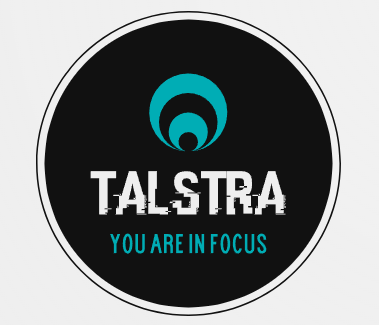.NET Framework

Introduction to .NET Framework
The .NET Framework, initially introduced by Microsoft in the late 1990s under the NGWS (Next Generation Windows Services) initiative, saw its first official release on February 13, 2002, in the form of .NET Framework 1.0.
In this section, we will delve into an exploration of the .NET Framework, delving into its defining features, constituent components, and various iterations.
What is the .NET Framework?
The .NET Framework is a virtual machine that provides a unified platform for executing applications crafted using diverse programming languages like C#, VB.NET, Visual Basic, and more. It enables the creation of applications or services across a spectrum of formats, including form-based, console-based, mobile, and web-based, all tailored to the Microsoft ecosystem. Moreover, the .NET Framework operates on a pure object-oriented paradigm, akin to the Java language. However, it does not possess the platform independence characteristic of Java; consequently, .NET applications exclusively function within the Windows operating environment.
The primary objective of this framework is to facilitate the development of applications designed to run seamlessly on the Windows platform. As of the latest update, the current version of the .NET Framework stands at 4.8.

Components of .NET Framework
There are the following components of .NET Framework:
- CLR (Common Language Runtime)
- CTS (Common Type System)
- BCL (Base Class Library)
- CLS (Common Language Specification)
- FCL (Framework Class Library)
- .NET Assemblies
- XML Web Services
- Window Services
The Common Language Runtime (CLR) is a crucial component of the .NET Framework, serving as a virtual execution environment. It enables the execution of programs written in various languages, such as C# and Visual Basic. The CLR plays a vital role in converting source code into bytecode, known as Common Intermediate Language (CIL) or Microsoft Intermediate Language (MSIL). During runtime, a Just-In-Time (JIT) compiler is employed by the CLR to convert CIL or MSIL code into machine-native code.
The Common Type System (CTS) defines a standard for representing data types and values in computer memory at runtime. CTS ensures that data types defined in different programming languages can interact and share information seamlessly. For instance, in C#, ‘int’ represents an integer data type, while in VB.NET, ‘integer’ serves the same purpose.
The Base Class Library (BCL) encompasses a rich collection of features and functions that facilitate the implementation of various programming languages within the .NET Framework, including C#, F#, Visual C++, and others. BCL is further divided into two parts:
- User-Defined Class Library: This comprises assemblies, which are deployable parts of an application, typically in the form of DLL (Dynamic Link Library) or exe (Executable) files. DLLs emphasize code reusability and cannot be run individually, unlike exe files, which contain the application’s main method.
- Predefined Class Library: This includes namespaces, which house predefined classes and methods in .NET. ‘using system’ in .NET is an example, where ‘using’ is a keyword, and ‘system’ is a namespace.
The Common Language Specification (CLS) is a subset of CTS that establishes a set of rules and guidelines for languages within the .NET framework. CLS ensures cross-language integration and interoperability. For instance, in C#, statements end with a semicolon, whereas in VB.NET, they do not. Despite these language-specific differences, the .NET Framework provides a common platform for interaction and information sharing.
Microsoft .NET Assemblies serve as the fundamental building blocks of the .NET Framework. These small units of code contain logical compiled code in the Common Language Infrastructure (CLI) and are essential for deployment, security, and versioning. Assemblies come in two forms: DLL (Dynamic Link Library) and library (exe). When a .NET program is compiled, it generates metadata in Microsoft Intermediate Language, stored in a file called an Assembly.
The Framework Class Library (FCL) offers diverse system functionality within the .NET Framework, encompassing classes, interfaces, data types, and more. It serves as the foundation for developing various applications, including desktop, web, and mobile applications. The FCL provides a common platform for building applications, controls, and components in the .NET Framework.
Key Components of FCL include:
- Object type
- Implementation of data structures
- Base data types
- Garbage collection
- Security and database connectivity
- Creating a unified platform for both Windows and web-based applications.
Here’s a concise summary of the key components and features related to the Common Language Runtime (CLR) and the .NET Framework:
- CLR (Common Language Runtime): The runtime environment for .NET applications, responsible for executing code written in various languages like C# and VB.NET.
- Namespace – Predefined Classes and Functions: Namespaces organize predefined classes and functions, providing a structured way to access and use functionality in the .NET Framework.
- Metadata and Assemblies: Metadata stores information about types, methods, and more in .NET assemblies, which are deployable units of code.
- Application Domains: Isolation boundaries within a process that enhance application stability and security by segregating code execution.
- Configuration and Deployment: Tools and features in the .NET Framework help configure and deploy applications effectively.
- Form and Web-Based Services: The .NET Framework supports the development of both Windows Forms (for desktop applications) and web-based services.
- ASP.NET and ASP.NET AJAX: Frameworks for building dynamic web applications and adding asynchronous capabilities to web pages.
- LINQ (Language-Integrated Query): Allows querying data from various sources using a unified syntax, enhancing data manipulation in .NET.
- Security and Portability: .NET provides robust security mechanisms, and its applications can run on multiple platforms.
- Interoperability: .NET supports interoperability with existing code and systems through various mechanisms like COM Interop and PInvoke.
- Multiple Development Environments: .NET offers various tools and environments for developing applications, catering to different needs and preferences.
We believe in accessible fitness for everyone. Our aim is to make it an enjoyable process so that you look forward to coming back every day.



